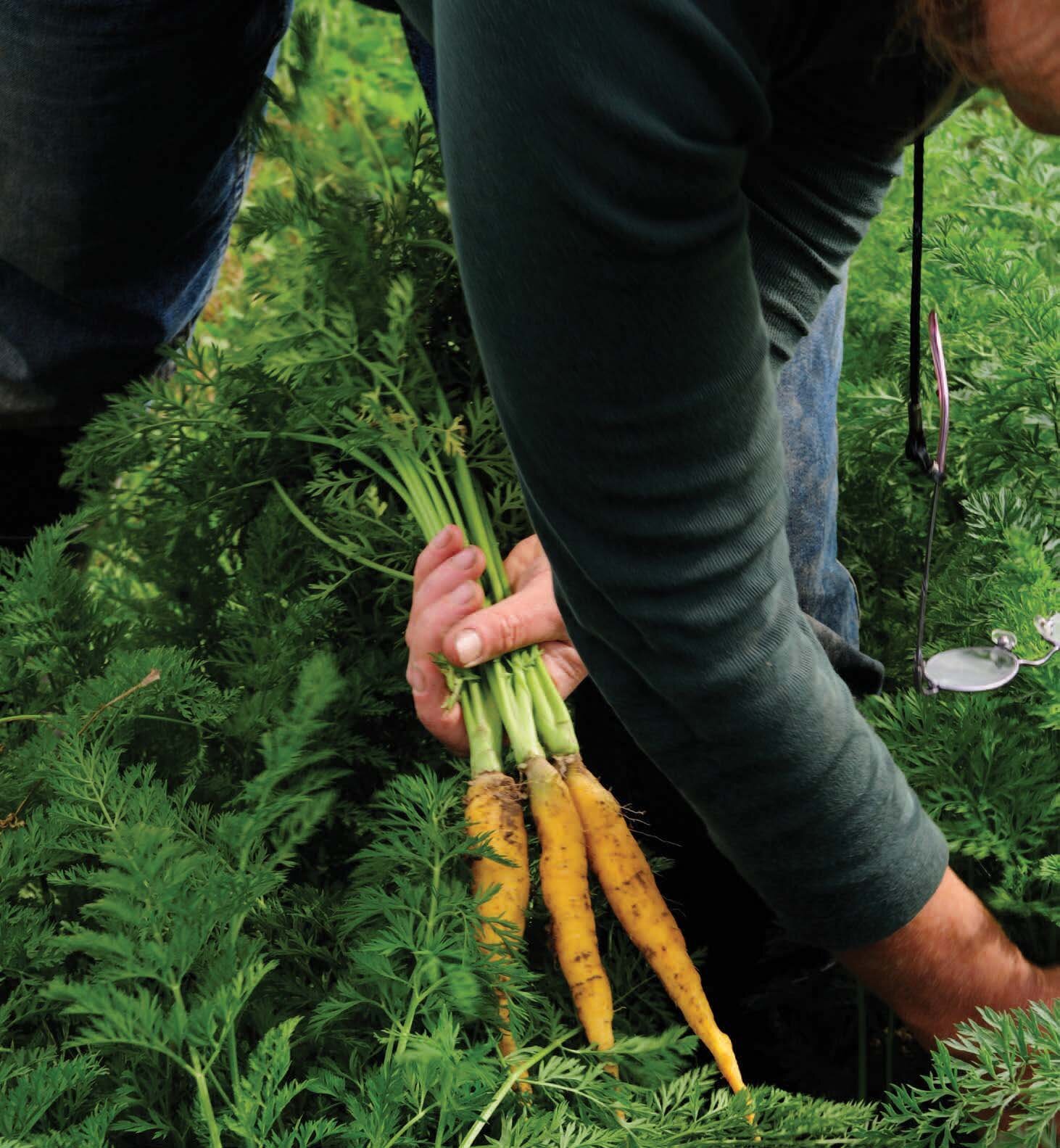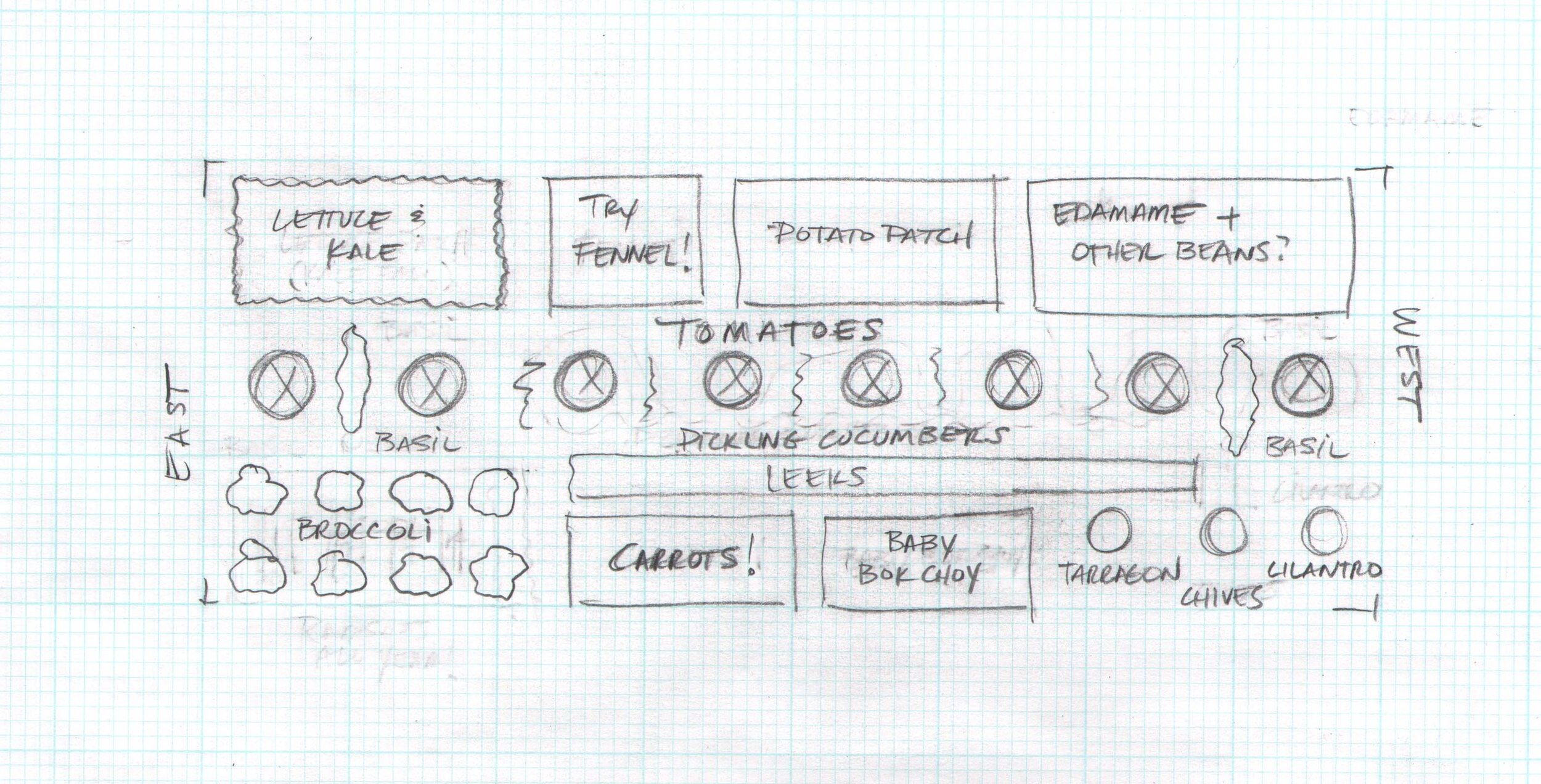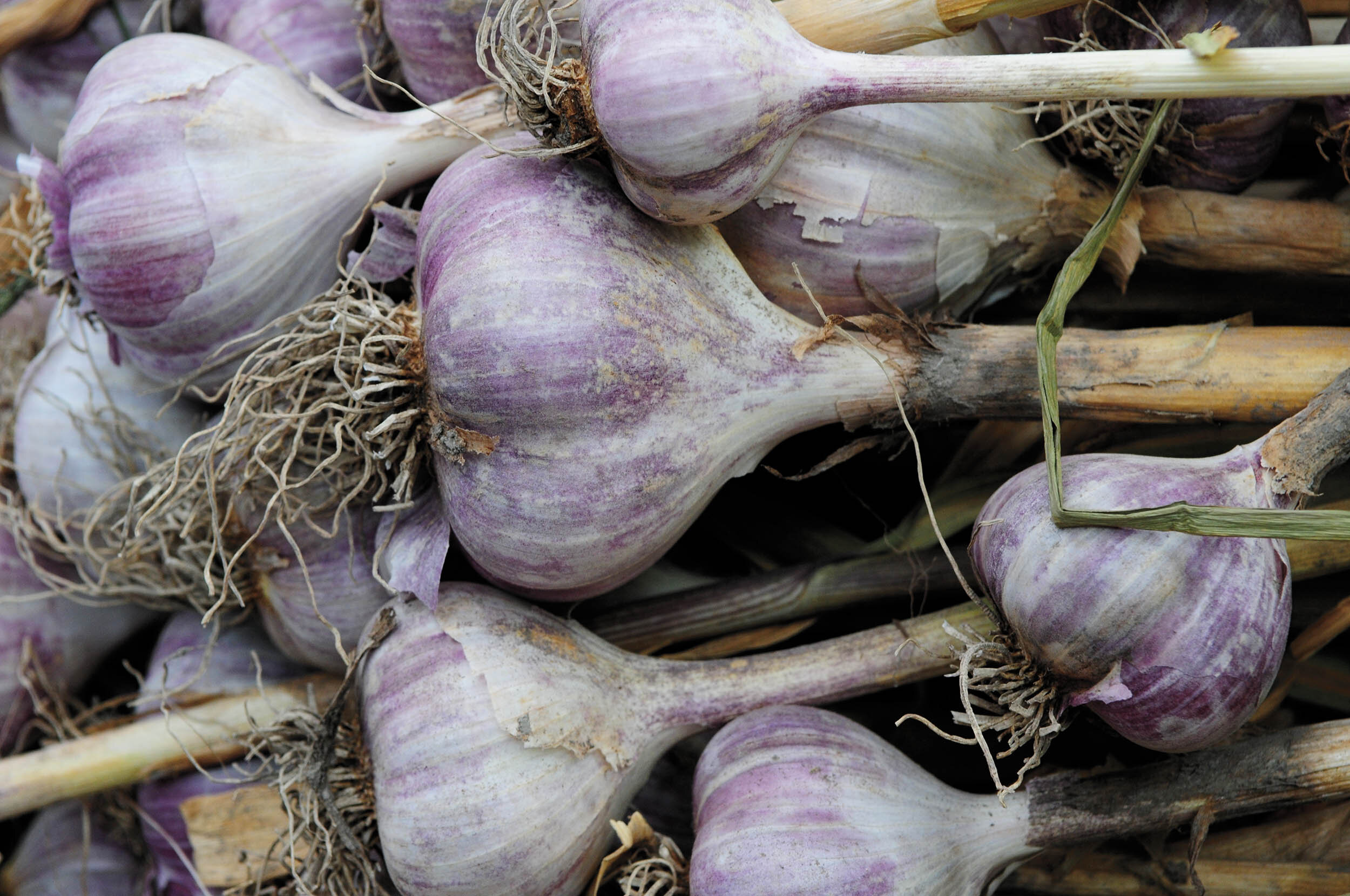Contain Your Enthusiasm

Pots, window boxes, storage tubs: Grow abundant vegetables in any sunny corner of your yard, no rototilling required.
One regret I have in my gardening history is not paying closer attention to container gardening. Oh, I did my fair share during my college years, growing peppers and tomatoes and herbs on sunny apartment balconies, but once I had a backyard at my disposal, container gardening slipped to an afterthought.
My interest was renewed, however, when my brother built me an elevated garden bench for my salad greens, to keep the leaves out of reach of critters and crawlies that like to nosh on the baby greens. That year’s experience was a revelation: The entire effort—from sowing to cultivating to harvesting—was so enjoyable that I began planting other crops in the bench, like radishes and herbs and small peppers. And soon, my entire south-facing deck was filled with vegetables in containers. As it should’ve been all along.
Container Gardening Pros
I’m not about to give up my yard beds, but comparing the two side by side for the last several growing seasons has unearthed some distinct advantages for container gardening:
Reduce disease and insect infestation. My potted vegetables suffer far fewer issues with disease than my yard gardens do. Soil-borne diseases, such as tomato blight, are constrained to a single growing season, since the potting mix is replaced every year with fresh. Infestations by harmful insects are often spotted early on because it’s easier to get up close and personal with all sides of your plants when they’re in a pot.
Follow the sun. In the suburbs, you don’t always have control over the shade-producing structures around your yard. Whether it’s a neighbor’s ancient tree, a privacy fence, or even your own house, your yard might not receive enough daily sunlight to grow the crops you want. Containers give you the flexibility to create a full-sun garden in spaces where digging a bed is not possible or desired, such as on your porch, deck, balcony, walkway, or oddly shaped shade-free spaces in your backyard.
Cultivate less. Potted plants have a significantly reduced problem with weeds, so time spent dealing with soil issues is practically nil. And even when a stray weed sprouts up through the soil, it’s easily spotted and quickly removed.
Garden pain-free. For anyone with back, knee, or shoulder problems—or any accessibility issue—container gardening is a godsend. Whether in pots on a deck rail or a waist-high garden bench, “upright gardening” is not only possible, it’s highly productive. As long as the container is deep and wide enough to accommodate healthy root growth for the plant, how you position it—high or low—is up to you.
Extend the season. Container gardening has an obvious, if sometimes overlooked, advantage: portability. Heat-loving summer vegetables in pots can enjoy a longer growth period on both ends of the season, simply by moving them to a warmer, indoor location during chilly stretches. I harvested the last of the sweet peppers the week of Thanksgiving, having moved the pots into the unheated garage during our sub-freezing cold snaps. Herbs such as rosemary, basil, and bay laurel can be brought indoors for the entire winter.
Maximize space. Gardeners are always looking to make room for just one more plant. Container gardening lets you take advantage of all of your sun-filled surfaces. Think beyond the porch and backyard. Line your driveway with attractive pots or create a grouping in a rock garden. Does a south-facing, unshaded wall of your garage or a privacy fence need some visual interest? Consider vertical gardening; there are many crafty solutions to consider, from wood pallets to PVC piping to rain gutters.
Tips For Success
Sunlight. Adequate sunlight is the primary consideration when choosing a spot to host your potted vegetables. Most plants need at least six hours of full sun throughout the growing season. When spring arrives, spend a sunny day observing the potential locations every hour or two, and note where the sunlight falls from morning until evening. Summer sun will arc much higher in the sky, so if the spring sun clears the treetops, you should be good for June through September.
Pot selection. Unlike houseplants, vegetables are made for growing underground, and their roots are accustomed to fanning outward in search of water and nutrients. So they’ll need as large a container as you can give them. Peppers grow great in 12-inch pots; for tomatoes, think gallons (18 or more) so they'll have space to stretch their roots, plus room for you to insert sturdy supports. Whatever container you choose, make sure it either already has drainage holes or that holes can be drilled into it. Beware of glazed ceramic: For a structure that shatters so thoroughly when dropped, it’s surprisingly difficult to drill through. Terra cotta is always a nice, inexpensive option.
Soil selection. Soil, more than any other topic, gets gardeners riled up. You have several paths to a good container medium. Commercial potting soil is easy to find and use, and garden centers and big box stores carry a wide selection, including organic op- tions. Make sure the mix contains perlite (or add it), which is a lightener that helps aerate the soil and reduce clumps. If you have clean compost available, add a double-handful to your potting mix. As an alternative, consider a soil-less mix of peat moss and/or coir (fiber from the outer husk of the coconut), or experiment with a combination of potting soil or compost, perlite, and coir.
Drainage. Good drainage is critical to healthy plant growth. Vegetables do not like soggy feet. Water, whether from rain or your garden hose, must flow freely from the pot, never puddling inside. For most standard round pots, one dime-sized hole will do. For large vessels and tubs, drill several 1 ⁄ 4-inch holes along the bottom. To prevent soil from escaping through the hole, line the bottom of the container with window screen, available in rolls at the hardware store. A basket-style coffee filter will work in a pinch. Optionally, you can add a shallow layer of small pebbles over the screen to facilitate pulling any slow-draining water away from the plant’s roots. A saucer is not necessary, unless you want to protect the surface on which the pot sits. If you do use a saucer, don’t forget to empty it after rain or regular watering.
Watering. A significant challenge in maintaining a container garden is managing the amount of water the plants receive. Read the care instructions for each plant, but in general, water when the soil is no longer damp 1 inch deep (your finger is a good testing tool). During hot, dry spells, you might have to water twice a day, once in the morning, and then again as soon as you can get to them in the late afternoon. Proper drainage will help considerably during rainy stretches, but there have been a few times when I’ve had to move pots under a protective covering to keep them from flooding. A tell-tale sign of too much water for too long is when the leaves of your plant begin to turn a pale green or yellow.
Fertilizing. Even with the ideal potting medium, your plants will use up most of the nutrients in the mix long before the end of the growing season. Plan on several supplemental feedings. I use fish and seaweed emulsion, which is readily available in stores. Organic granulated fertilizers, such as Plant-Tone, can be mixed into the soil at the time of potting, and sprinkled on top of the soil every four to six weeks.
One trick tomato and pepper lovers should know about is Epsom salt. Tomatoes frequently have a calcium deficiency, which can present as blossom end rot or a curling and dying of young leaves. The calcium deficiency itself is not necessarily an absence of calcium in the soil, but rather the plant’s inability to draw this essential nutrient into its system. Magnesium helps with this process. Use Epsom salt (magnesium sulfate) as a top dressing, sprinkling 1 tablespoon per plant on top of the soil, and watering it in. Peppers are frequently magnesium deficient, so a dose of Epsom salt quickly boosts their productivity.
Supports. Will your container vegetables need staking in a pot? A good rule of thumb is that if they need support when planted in the ground, they’ll need support in a pot as well. Spiked plant cages come both in round and square shapes and fit neatly into standard pots. You can also use singular stakes, but note that they tend to tip over with the weight of the plant. For tall-growing plants, such as tomatoes and squashes, choose a container that’s large enough to accommodate extended cages or trellises.
Whether you live in an urban apartment with a balcony or a sprawling suburban homestead with plenty of yard space, container gardening is an easy, convenient way to grow an abundance of herbs and vegetables at home. Ready to start planting? Check out our Pinterest board for inspiration and clever ideas.
8 Crops that Grow Well in Containers
You can grow just about anything in a pot if the vessel is large enough and gets the right amount of sun. With the rising interest in urban gardening, plant breeders and seed producers have made the effort to stabilize cultivars that do well in small spaces - including traditionally large crops, such as corn, and the big liners, like watermelon and winter squash. Here’s our list of low-risk vegetables that produce happily and abundantly in containers:
Herbs
Whether culinary or decorative, herbs are generally flexible, unfussy growers, even in pots. In fact, it’s better to grow herbs in the mint family—including sweet mint (spearmint) and lemon balm—in containers because they spread aggressively via underground runners.
Radishes
Oh, radish, you harbinger of spring, you’ll grow just about anywhere. The radish’s shallow roots and super-fast growth cycle are ideal for containers. I plant them in long window boxes on the deck rail, where the lush, beautiful greens stand out against the brown of early spring.
Peppers
Sweet bell peppers and spicy favorites like jalapeños, serranos, and habaneros produce abundant harvests in pots. Their upright habits mean they will need staking once they begin to fruit, but expect healthy yields from mid-summer to frost.
Swiss Chard
Chard is a gem anywhere in your yard, but in containers it’s gorgeous, especially if you plant a rainbow variety. Choose a larger pot than you think you’ll need, because hardy, and a green you’ll want to keep around all season long.
Green Onions/Scallions
One of my surprise favorite crops to grow in containers, green onions (sometimes called bunching onions) are easily started from seed outdoors and grow slim and upright, so you can fit plenty in each pot.
Tomatoes
You wouldn’t think these space hogs would do well in containers, but they do. You’ll need a huge pot (think storage tub), plenty of loose soil with a nice amount of compost, and sturdy supports with room for vertical expansion.
Green Beans
Not only are beans generous producers, but the plants are decorative, with nicely shaped leaves. To grow bush varieties, sink a teepee trellis in the center of a large pot, and sow seeds around it. For pole varieties, make sure the vertical support can extend upward at least six feet. Plant a mix of green, purple, and yellow varieties for extra color.
Cucumbers
One summer, I experimented intentionally with vegetables that aren’t pot-intuitive. Compact bush cucumbers are a slam dunk, but I also grew a viner in a 14- inch pot. It snaked up the trellis, trailed along the rain gutter, and produced weeks longer than my ground-planted cukes.
Karen is a four-season vegetable gardener and seed-totable advocate, blogging at SoupAddict.com. Her current garden crushes include black heirloom tomatoes, dill, lovage, and a small bay laurel shrub that flavors her soups. Her most heartfelt wishes are for world peace (of course), kindness to animals, bike lanes in Anderson, and for everyone to grow something edible at home.





